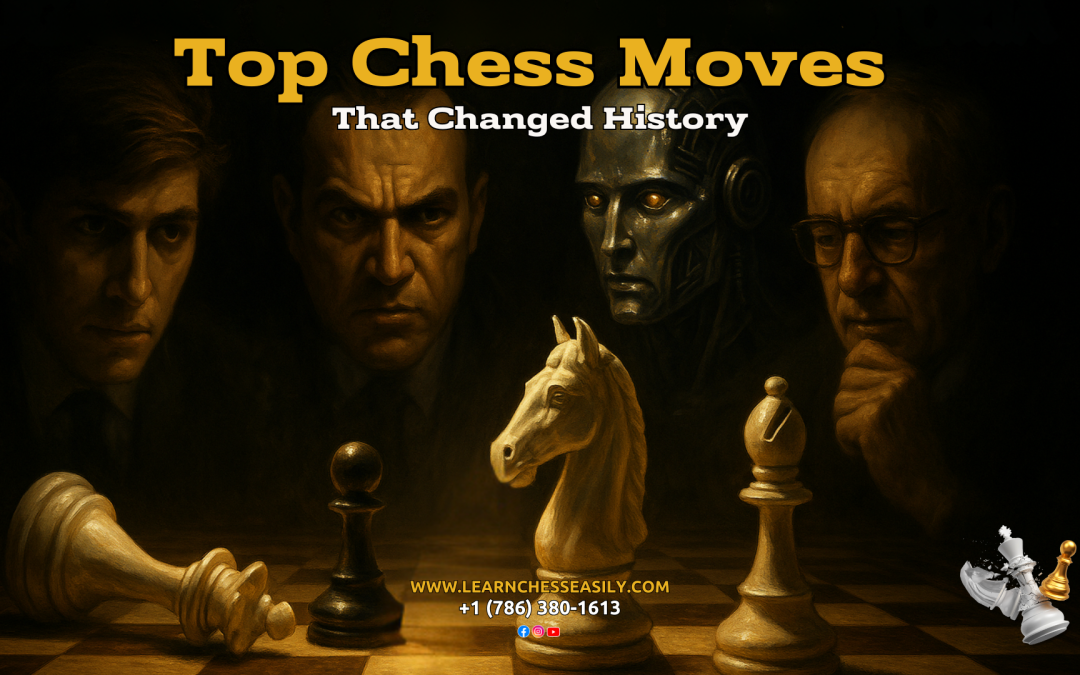While “changing history” might be an exaggeration for individual chess moves, some have been so brilliant, bold or unexpected that they’ve left a lasting impact on the game. Here are a few (in my opinion) that stand out:
- Bobby Fischer’s Queen Sacrifice .. Na4!! and 17… Be6!! in the Game of the Century, 1956, part of the 3rd Rosenwald Trophy Tournament held at the Marshall Chess Club in New York): In this famous game against Donald Byrne, 13-year-old Bobby Fischer pulled off a bold queen sacrifice that looked like a mistake—but it was actually a brilliant trap. It led to a winning attack and gave the world a glimpse of the chess genius he was becoming.
- Kasparov’s .. g5!! in his 1985 World Championship match against Karpov (Game 16): This move shows Kasparov’s aggressive playing style and sharp tactical instincts. In a tough battle, that bold pawn push gave him the edge he needed to take control and win—not just the game, but eventually the whole match on his path to becoming World Champion.
- Deep Blue’s 5. Ng5 against Garry Kasparov in their 1997 rematch (Game 6): While not necessarily a move of tactical brilliance, it was a big deal—it showed that a computer could play an unconventional, well-prepared strategy and break the usual opening rules. This move, combined with Kasparov’s subsequent blunder, led to a historic victory for Deep Blue and marked a turning point in the relationship between human and computer chess capabilities.
- Botvinnik’s 30. Ba3! against Capablanca in the 1938 AVRO Tournament (Game 11): This decisive move, part of a tactical combination, drew the black queen away from its defensive position, paving the way for Botvinnik’s victory. The game, which Garry Kasparov called Botvinnik’s “game of his life,” is a classic example of strategic depth and tactical execution.
These are just a handful of examples. Chess history is full of remarkable moves that continue to inspire and influence players across generations.
Coach AL

